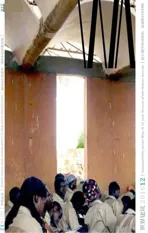第一届豪瑞奖亚太区金奖:杭州来氏聚落再生设计
2016-12-21主要设计者常青同济大学建筑与城市规划学院
主要设计者:常青/同济大学建筑与城市规划学院
第一届豪瑞奖亚太区金奖:杭州来氏聚落再生设计
主要设计者:常青/同济大学建筑与城市规划学院

1 再生计划实施效果图/Rendering, after regeneration
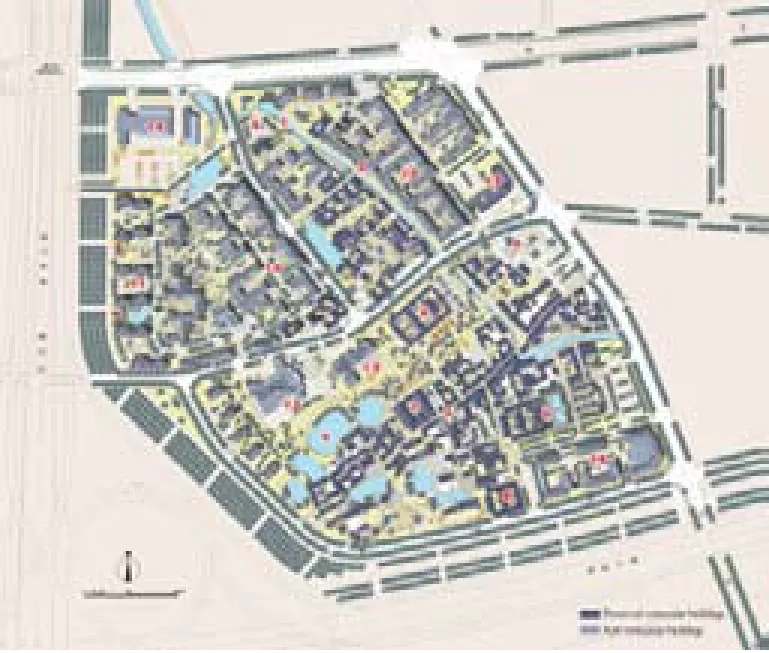
2 总平面/Site plan
设计团队/Design Team: 常青,张鹏,沈黎,吕峰,陈捷,徐永利,胡涛/同济大学建筑与城市规划学院/ CHANG Qing, ZHANG Peng, SHEN Li, LYU Feng, CHEN Jie, XU Yongli, HU Tao/College of Architecture and Urban Planning, Tongji University
1 设计背景
杭州来氏聚落再生设计,是关于城乡结合部风土历史环境命运及其城市化方式的规划设计,也是同济大学常青研究室完成的“钱塘古镇保护与再生设计系列”的一个组成部分。
来氏聚落有近900年的历史,位于杭州钱塘江南岸的长河镇中心地段,原属萧山县,1996年划归杭州市滨江区,成为新市区的一部分。在昔日的宗法社会,来氏家族崇尚耕读,自宋明以来产生过许多名仕鸿儒,长河历史上的人文空间遗产“九厅十三堂”,在江浙风土聚落中是闻名遐尔的“阳春白雪”。
几十年来,特别是近20年中,这个望族聚落已经衰朽不堪,许多著名的历史建筑群都遭拆毁或被翻建成了简陋的“现代建筑”。河道、灌渠、池塘等水系被大段阻塞或填平,且污染严重。早先繁荣的传统商业街今已萧条破败,街区内市政设施简陋欠缺,居住生活质量低下。长河面临着城市化带来的新旧更替和丧失风土资源的双重现实。所幸镇内核心地段还保存着相对完整的风土地脉结构及相当数量的传统老房子,许多来氏家族后裔还在这里生息,因而保持和延续风土特征似乎还有可能性。这样的城郊古镇聚落在我国大城市周边何止千座,因而这个案例对我国城乡保护与改造具有普遍探讨意义和典型实验价值。
2 设计目标和策略
其核心是在结构性保护,即在保存原有环境的自然与文化生态系统的前提下,完成聚落的再生设计。这些前提包括保持和梳理与水乡环境相呼应的道路系统,顺应道路系统的房屋组群布局、肌理、尺度和朝向,以及具有象征意味和心理暗示作用的风习讲究。而聚落再生设计的策略,则在于寻求解决以下关键问题的途径:
(1)延续地志、保持地脉、保留地标;
(2)再生古旧建筑、更新生活空间;
(3)整合新旧要素、发展城市文脉。
3 设计方法
可以概括为:
(1)“人类学调查分析”
3年来设计团队反复下现场踏勘,探访来氏后裔,尽量使“客位”接近“主位”,听他们讲聚落故事,请他们勾画过去的景观意象,查阅家谱和旧档案,并对老街和地标性建筑作详细测绘实录,对场地内现存所有建筑逐一进行甄别、分类、定级。
(2)“生活形态策划设计”
规划设计前期考虑了聚落观光的场景设置需要,对风土街景和庭院、厅堂的再生业态和空间效果进行了策划。规划设计中不仅注意了不同层次居住功能,而且提出了按家庭结构和邻里关系回迁安置一部分原住户的构想。
(3)“新旧空间嵌入式设计”
设计过程框图包括:保持和整修地脉构成中的原有干道系统、原有水系和步行系统,整饬原有风土建筑群,重塑新风土建筑群,整合新旧地景系统。
4 设计焦点
可以概括为:
(1)以风貌核心区内的原址、原貌,成条、成片地保留和修整水系、老街和老建筑(内部空间)为主,重点修复几座有代表性的“九厅十三堂”遗构。
(2)除了保护和尊重历史上的地脉关系和老街段、老房子,也有选择地保留和更新20~30年前有时代典型性和再利用价值的公共建筑、工业建筑,如长河影剧院,是1960-1970年代典型的“革命现代式”公共建筑,仍有一定的纪念价值和较高的利用价值,故予以保留和改造。
(3)在聚落的地脉结构和肌理构成中,“嵌入”以新材料设计的现代风土建筑群,并且考虑了改善环境、节约投入成本和节能等建造问题。例如对河道水系的整理、整饬,对当地传统空斗墙的参考以及太阳能利用等,都纳入了设计发展之中。风貌协调区中的新风土建筑,包括轻钢系列的town house(联排住宅),钢木、混凝土系列的跃式住宅等方案就是以这样的方式进行的。从2002年至今,先后提出了3轮方案,这里展示的是最初的新旧对比方案和定稿的新旧协调方案。
总之,本项目设计的关键是把握风土聚落的地脉结构和生活习俗变化趋势, 把不同文明阶段的空间遗产和新旧设计要素整合起来,把历史脉络有机地“编织”到新的城市演化进程之中。
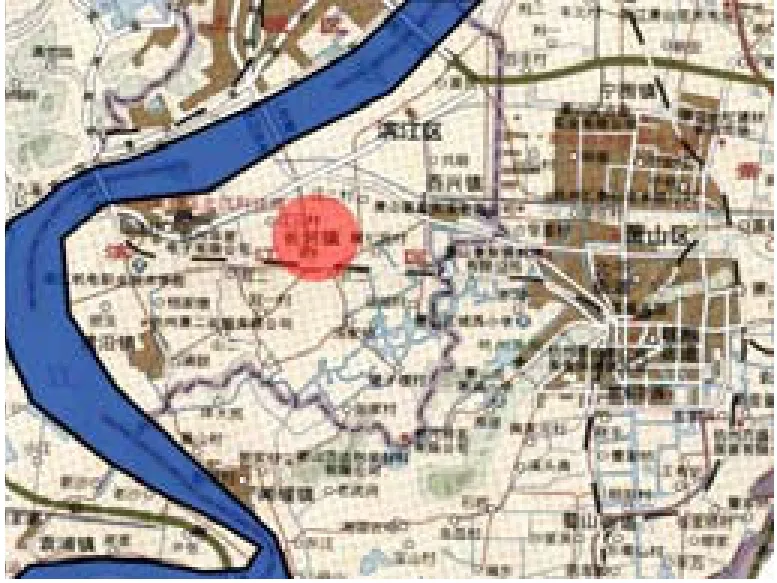
3 区位/Location

4 场地周边环境分析/Context with Hangzhou city
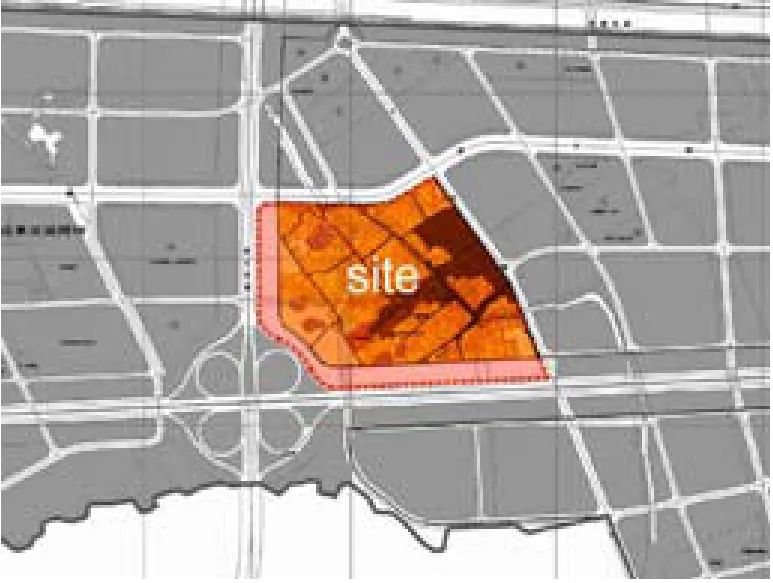
5 场地与环境/Te site and its environment
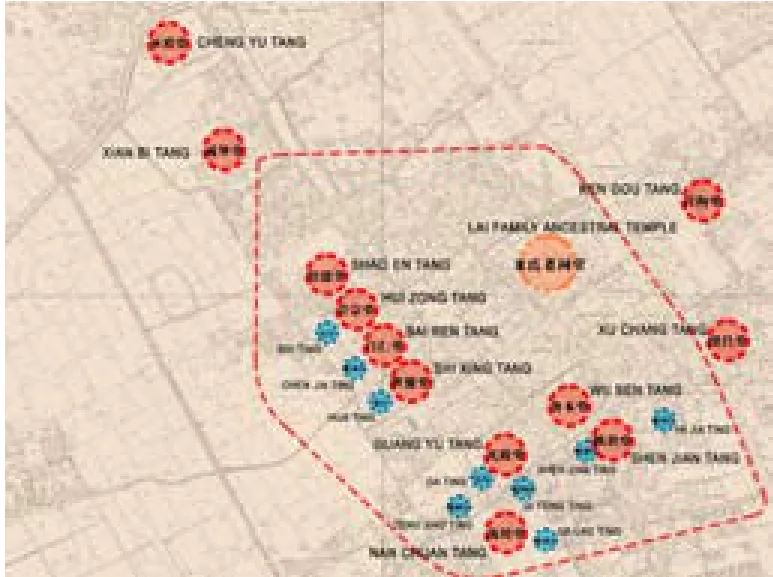
6 来氏宗族“九厅十三堂”分布/Distribution of clan LAI's main houses & ancestral temple
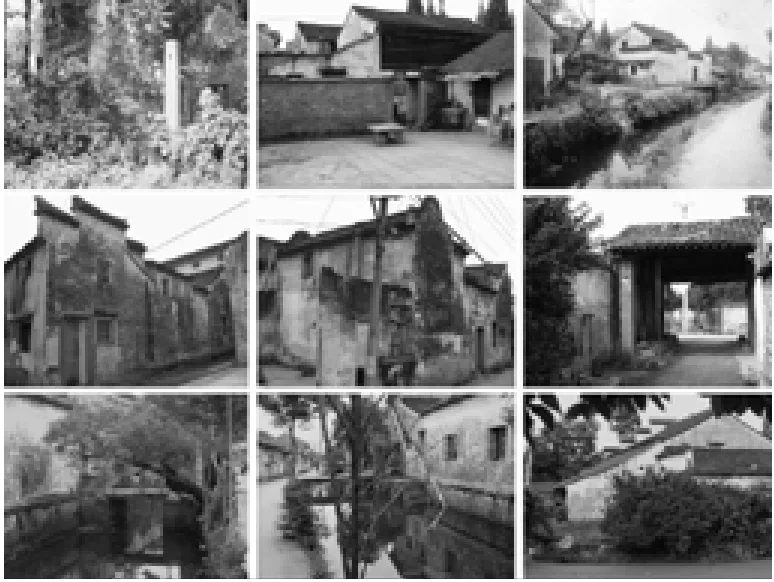
7 物质环境状态/Status of physical environment
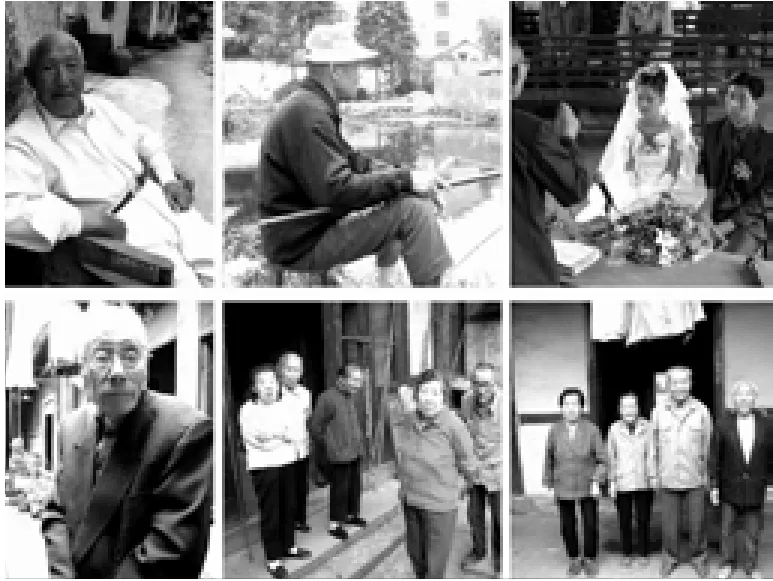
8 居民生活状态/Living status of resident

9 来氏族人手绘已毁宗祠记忆图像/A person from LAI Family was sketching the ruined temple in his memory
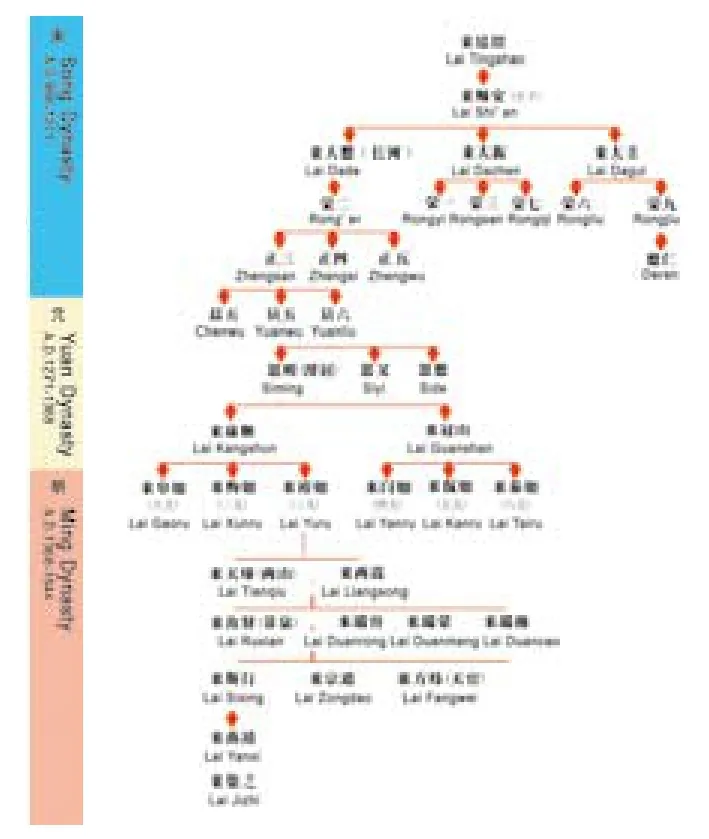
10 局部来氏族谱/Part of the pedigree of clan LAI
1 Background
The Lai Clan Settlement Regeneration Project in Hangzhou addresses the fate of a historic district on the urban-rural fringe faced with urbanization. The project is part of Tongji University's CHANG Qing Studio's Qiantang River Town protection and regeneration design series.
The Lai family and its many branches lived in their clan settlement over the past 800 years. On the south bank of the Qiantang River, their settlement was originally part of Xiaoshan County. In 1996 the area was annexed by the city of Hangzhou and became part of the municipal Binjiang district. In the past under the traditional patriarchal clan system, the Lais were both farmers and scholars, producing many outstanding officials and Confucian scholars from the Song and Ming dynasties onwards. In Changhe Town's history, as tangible heritages, the "Jiu Ting Shi San Tang" ("Nine Halls and Thirteen Pavilions") were one of the most supernormal refined style buildings in the settlements in south of the lower reaches of the Changjiang River.
Over the past sixty years, and especially in past twenty years, the prominent Lai clan has been in decline, and many of their famous and historic groups of buildings have been remade in simple modern styles. Canals, drainage systems and ponds have been leveled, creating much pollution. The historic town business center has largely disappeared, the local government facilities have fallen into disrepair and living standards are down. Haphazard urbanization of the part of their area that faces the river has favoured new over old built environment and ruined the traditional character of the place. On the other hand within the town center most of the built vernacular and topological structure, as well as many of the old houses, remain. Many of the Lai descendants still live there, meaning there is still the possibility of extending or rejuvenating the old local heritage. Although there are many of these old towns adjacent to other large cities in China, there is value in researching and discussing the preservation and regeneration of this one clan settlement.
2 Objective
The key objective is to realize the structural conservation, i.e. to maintain the natural and cultural ecological system, which is the presupposition to control the regeneration design. That means to preserve and rehabilitate the traditional water village's river and street systems, the textures of the groupings of houses, their proportionality and directional axes, and cultural conventions acting as some psychological hints of "Feng Shui", etc…
The design strategy tries to resolve three key problems: 1) how to continue the historic topography; to maintain the land context and to preserve landmarks in the historic areas of the towns from remote to late past. 2) how to make the old spaces suitable for the contemporary requirements of people who live there. 3) how to form a new texture composed of both local vernacular features and today's modern life space.

11 聚落结构分析/Structural analysis of the settlement
3 Methodology
Anthropological investigation and analysis
After three years of on-site investigating of the Lai Clan descendents, members of the design team have become more than just guests in the community(from etic to emic). The researchers have performed many specific roles: listening to old stories, asking today's residents to draw images of the past, investigating old portraits and documents, researching even the most detailed aspects of their old buildings, and assessing the types and classes of buildings.
Design of living functions and settings
Before the design plan can be put forth, it is necessary to plot the needs of residentialspaces and future tourism, for example, the new function of pavilions and halls, and the ultimate use of space. Within the design plan it is not only necessary to pay attention to the uses of different types of residences, but also to address the relationships amongst households and neighbours as a function of the original inhabitants' lifestyle concepts.
Plugging design of new and old spaces
Design steps include the following: 1) Modification of the original road system, 2) Restoration of the original water-transport system and pedestrian walkways, 3) Refining the original clusters of houses, 4) Reconstruction of new vernacular buildings, and 5) Integration of old landscape with new.

12 来氏聚落厅堂修复之一(平面图红色为复原部分)/ Restoration of a clan house (red part in the plan is restorated)
4 Focus
Within the characteristic local vernacular culture there are both original places and original styles, mature streets and plots of land, preserved and restored waterways, old streets and buildings (including interior spaces) which are all important. Within these categories we will select representatives that best fit the "Jiu Ting Shi San Tang" style.
Beyond saving important traditional streets and houses, we will also select stereotypical buildings from the recent past that are still useful; as in public and industrial buildings. The Changhe Theatre, as a prime example of the 1950s-1970s revolutionary modern style of public buildings, will be saved and upgraded as it is still useful as well as having value as a memorial of that age.
Within the topological structure and texture of the clan settlement's make-up, we have to meet some key issues when we "plug in" new construction materials and modern structures, as we improve the environment, save costs and energy. For example, what will be the justification for the passive use of earth energy with the hollow walls, dredging rivers and repairing the waterways, when new building methods favour the use of different types of lightweight steel and concrete system in housing construction.
1st Holcim Awards Gold Award Asia Pacific: Design for a Clan Settlement's Regeneration
Main Author: CHANG Qing/College of Architecture and Urban Planning, Tongji University
